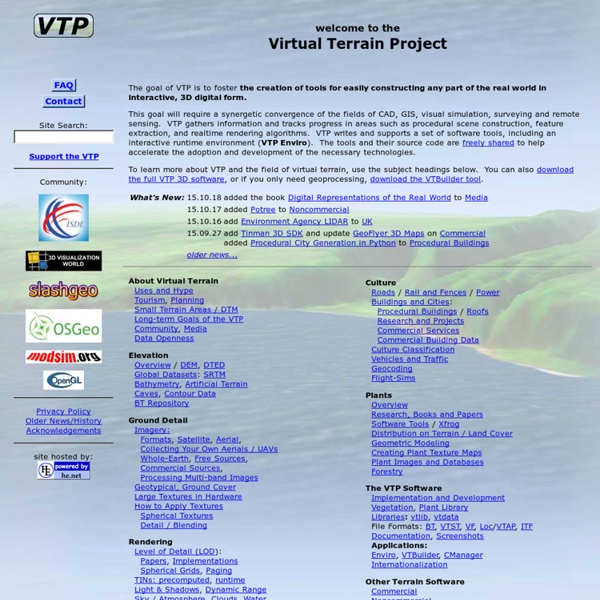



Chapter 3 - OpenGL Programming Guide Chapter 3 Viewing Chapter Objectives After reading this chapter, you'll be able to do the following: View a geometric model in any orientation by transforming it in three-dimensional spaceControl the location in three-dimensional space from which the model is viewedClip undesired portions of the model out of the scene that's to be viewedManipulate the appropriate matrix stacks that control model transformation for viewing and project the model onto the screenCombine multiple transformations to mimic sophisticated systems in motion, such as a solar system or an articulated robot armReverse or mimic the operations of the geometric processing pipeline Chapter 2 explained how to instruct OpenGL to draw the geometric models you want displayed in your scene. Look at the image on the cover of this book. A series of three computer operations convert an object's three-dimensional coordinates to pixel positions on the screen. Overview: The Camera Analogy Figure 3-1 : The Camera Analogy v'=Mv Try This
14 Concept Appliances That Need To Be Made | My Bad Pad Concept appliances give us a peek into the future. They are often aesthetically pleasing and offer interesting and unique features; however, it is a rare concept appliance that makes it off of the drawing board and into the showroom. Unrealistic designs, high production costs and lack of consumer demand are often the reason for many ideas to be scrapped. Yet, here are 14 interesting concept appliances that have made it to the model stage and look so good that we hope they go into development soon. The iBasket is a hamper/washer/dryer combo. Why do consumers need the iBasket? The iBasket saves time and energy as you’ll never have to transfer your clothes from the hamper to the washer to the dryer again. Features: Transparent body Built-in air refresh system that removes the smell of dirty clothes Wi-Fi enabled to help you monitor it from your PC or laptop The one drawback to the iBasket is that it is very small. Why do consumers need the FlatShare? Why do consumers need the Coox?
TinyXml Main Page TinyXML is a simple, small, C++ XML parser that can be easily integrating into other programs. You may want to consider TinyXML-2. I found myself writing a text file parser every time I needed to save human readable data or serialize objects; I created TinyXML to solve the text I/O file once and for all. (Or, as a friend said, end the Just Another Text File Parser problem.) TinyXML has evolved from community feedback and become the work of many contributors. Online Documentation: including sample code, general information, and an API reference. Download the latest source release on Sourceforge. Please send me e-mail if you like (or don't like) TinyXml - and I'm always curious who is using it! Thanks, Lee
Wasting Hackers' Time to Keep Websites Safe Most security software defends PCs and websites by acting like a locked door to shut hackers out. A new security company, Mykonos Software, instead invites hackers in through a fake entrance and plays tricks on them until they give up. “If you break in, I want to have fun with you,” says David Koretz, CEO of Mykonos. Koretz claims that the computer security industry is too timid—he advocates making hackers’ lives tedious and difficult instead. Mykonos sells software intended to protect websites against attacks—like those on Sony’s websites last year that yielded thousands of credit-card numbers—aimed at gaining access to valuable data such as user credentials. The company’s software is aimed primarily at hackers who use automated tools that identify and exploit vulnerabilities in websites, says Koretz. Wasting assailants’ time “changes the economics” of attacking websites, says Koretz.
CodeSampler.com robot adapts to injury Lindsay France/University Photography Graduate student Viktor Zykov, former student Josh Bongard, now a professor at the University of Vermont, and Hod Lipson, Cornell assistant professor of mechanical and aerospace engineering, watch as a starfish-like robot pulls itself forward, using a gait it developed for itself. the robot's ability to figure out how it is put together, and from that to learn to walk, enables it to adapt and find a new gait when it is damaged. Nothing can possibly go wrong ... go wrong ... go wrong ... The truth behind the old joke is that most robots are programmed with a fairly rigid "model" of what they and the world around them are like. If a robot is damaged or its environment changes unexpectedly, it can't adapt. So Cornell researchers have built a robot that works out its own model of itself and can revise the model to adapt to injury. "Most robots have a fixed model laboriously designed by human engineers," Lipson explained.
"Deep Play" a review of Clifford Geertz's 1973 Essay by Stuart Hardman Practice-It!, a web-based Java practice problem tool for computer science students